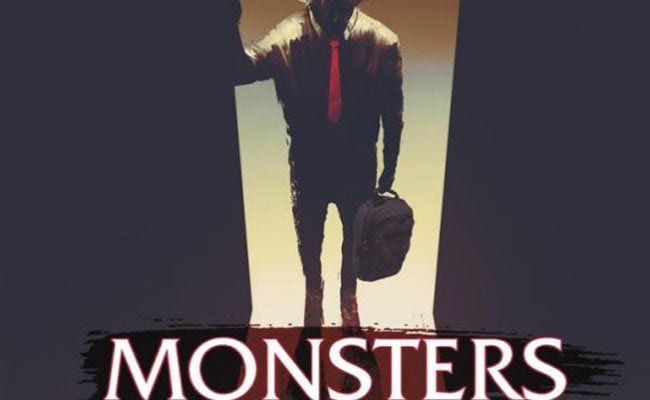
Monsters in the Classroom: Essays on Teaching What Scares Us, edited by Adam Golub and Heather Richardson Hayton, touches on some of the things that are wrong with education today, but the book primarily focuses on what’s oh so right.
Monsters in the Classroom looks at ways educators (primarily at the college level but many of the ideas presented could be adapted for use at other levels, and one chapter focuses specifically on secondary education) incorporate monsters into their classes. From Frankenstein to King Kong to Buffy the Vampire Slayer, students in these classes examine texts, read critical theory, and make connections between these monsters and their own societies. Students study monsters in terms of space, religion, history, philosophy, politics, sexuality and gender. Students write papers, give presentations, make posters, take exams, and create and photograph “grotesque” scenes. In short, students learn. A lot. And they have fun doing it.
Of course, for some the idea of putting fun and education in the same sentence is a problem (which is one of the things that is wrong with education in the United States today). Consider the way historian and professor W. Scott Poole describes both student and faculty reactions to monster classes in the book’s introduction: “So, our students come sometimes giddy with excitement but uncertain of what we will actually do. Unfortunately, sometimes colleagues are equally dubious. ‘I hear that’s a popular class,’ they sniff, which translated means ‘I’m doing serious historical work in my class and so that’s why it’s less popular.’”
So what’s the problem with monsters?
The answer, according to Poole, seems to relate back to pop culture. Monsters have been around since the beginning of time, but for many academics they are too closely associated with pop culture, a culture that is often viewed by college professors and academics as a “mind-numbing, apolitical mass culture” or as something that is full of “mellow disengagement”.
There’s nothing mind-numbing about the classes described in these essays, nor do these classes allow for any type of disengagement, however. The course titles, introductions, objectives and descriptions pose thought-provoking questions and suggest a high level of academic rigor. Pamela Bedore opens her class on The Monster in Literature and Culture by asking questions like “What is a monster? Why are monsters present in every human society? How has the figure of the monster evolved along with changes in literary and artistic representations of the human experience?” Joshua Paddison teaches a class called Ghosts, Monsters, Demons and Aliens in U.S. History and opens his syllabus with “Using historical primary sources as well as scholarly books and articles, we will investigate what ghosts, monsters, demons, and aliens reveal about Americans’ changing religious beliefs and cultural attitudes from the colonial period to the present.”
This book is full of educators who were willing to find a different spin or try a different take on their content — even when they really didn’t want to. Charlotte Eubanks opens her chapter “Monsters in the Dark Forest of Japanese Grammar” by stating “I had not wanted to teach about monsters. But the monsters, and the monstrous, would not be denied” and later in the chapter states “Although I was initially reluctant to take it on, I find now that acknowledging the monsters — integrating our fear and discomfort into the fabric of class discussions, homework assignments, free-writing exercises, and class projects — has turned out to be the very thing that allows my students to find the voices they need in order to define, and defend, their own linguistic agency.”
Studying monsters is nothing new, but creating entire classes around the theme of monsters (or the monstrous) is a little more unusual, particularly in disciplines like history and theater. And it’s always nice to see educators experimenting — especially with things that involve staging overnight zombie apocalypses for first year students (which is something Professor Heather Richardson Hayden has done in several of her classes).
This book is in and of itself an example of another wonderful thing happening in education today. The 12 educators who wrote chapters for this book share a great deal of their research and many also include full syllabi with reading lists and assignments. They do this so other educators can use these ideas to encourage deeper engagement with students in their own classes.
The essays in this book primarily examine classes that focus completely on monsters, but the assignments could be easily adapted to coursework of which monsters are only a part. Additionally, assignments that are out of reach could be modified to be more attainable. All teachers might not be able to take their students, for example, on a walk through London (as Professor Kyle William Bishop does with his students) to find the actual locations Bram Stoker references in Dracula, but reading about this trip might give educators ideas for other types of activities.
None of this would be possible without the generosity of the educators who created this book, and these educators, and others like them, should make us all optimistic about the future of education.

